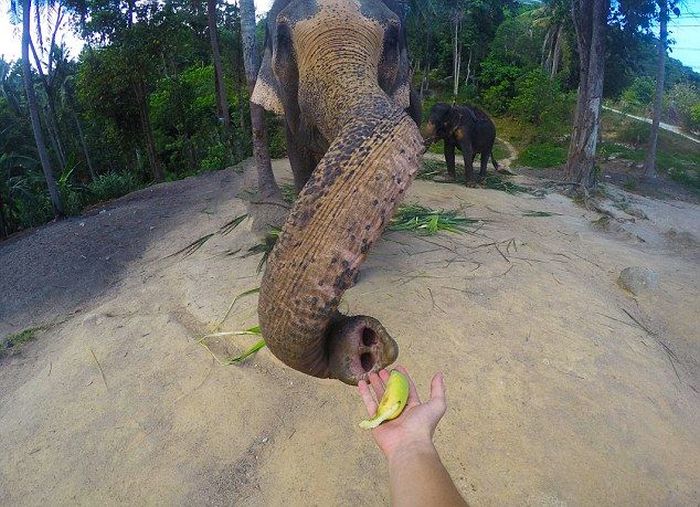|
|
Elephant Taking A Selfie
|
In popular culture
Elephants are ubiquitous in Western popular culture as emblems of the exotic because their unique appearance and size sets them apart from other animals and because, like other African animals such as the giraffe, rhinoceros, and hippopotamus, they are unfamiliar to Western audiences. Popular culture's stock references to elephants rely on this exotic uniqueness. For instance, a "white elephant" is a byword for something expensive, useless and bizarre.
As characters, elephants are relegated largely to children's literature, in which they are generally cast as models of exemplary behaviour, but account for some of this branch of literature's most iconic characters. Many stories tell of isolated young elephants returning to a close-knit community, such as The Elephant’s Child from Rudyard Kipling's Just So Stories (1902), Dumbo (1942) or The Saggy Baggy Elephant (1947). Other elephant heroes given human qualities include Laurent de Brunhoff's anthropomorphic Babar (1935), David McKee's Elmer (1989) and Dr. Seuss's Horton (1940). More than other exotic animals, elephants in fiction are surrogates for humans, with their concern for the community and each other depicted as something to aspire to.
|
|









